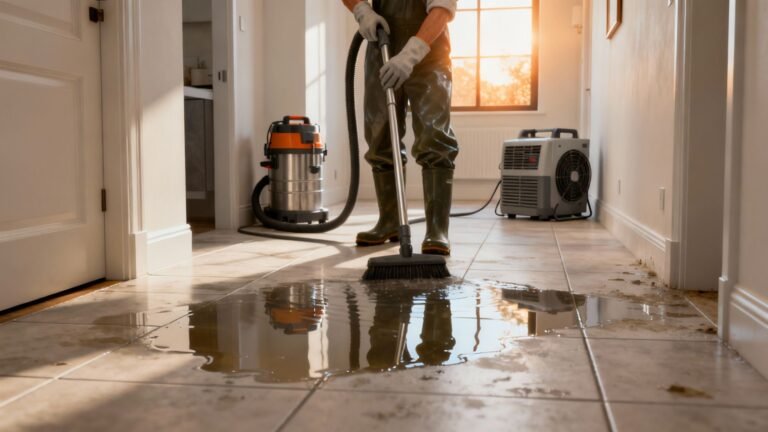
Your Guide to Emergency Water Cleanup at Home
When you find yourself standing in water inside your home, the clock starts ticking. Those first 30 minutes are absolutely
Mold grows where moisture lingers. Leaks, condensate, roof intrusions, wet crawl spaces, and poor ventilation turn walls, subfloors, and cabinets into long-term reservoirs. Wiping visible spots is not removal. It ignores hidden moisture, skips containment, and spreads spores to clean rooms. Specialists treat mold as a building-science and contamination problem. They control air, remove colonized materials, clean to a measurable standard, dry to target, and verify results. This guide shows when you need a specialist, how the professional process works, what drives cost, and how to prepare your project for a clean pass on post-remediation verification.
Stops and corrects the moisture source first so results hold.
Builds containment and runs negative pressure to prevent spread.
Removes contaminated porous materials instead of “sealing” them.
Uses HEPA filtration and a repeatable clean protocol.
Dries the structure to defined targets and documents the process.
Verifies success with visual criteria and optional third-party testing.

Visible growth over 10 sq ft or recurring spots after cleaning.
A water event older than 24–48 hours with wet drywall, cabinets, or subfloor.
Musty odor with no obvious source, especially near HVAC closets or crawl spaces.
Attic, crawl space, or behind-wall suspicion.
Occupants with sensitivities or medical concerns.
Real estate, HOA, or lender requirements for documentation and clearance.
A professional scope starts with cause. Supply lines, drains, roofs, windows, decks, stucco penetrations, and HVAC condensate are common sources. Specialists confirm and coordinate corrections in parallel with remediation. Moisture mapping follows. Meters and thermal cameras identify wet assemblies and set the boundaries for containment, removal, and drying. The written scope ties each action to a measurement, not a guess.
Pros photo-document rooms, materials, and details. They note readings, affected square footage, cut lines, and equipment counts. This record justifies removal vs. clean decisions and helps speed insurance approvals when applicable.
Containment walls of poly or rigid panels isolate the work zone. Zipper doors control access. Negative pressure runs continuously using HEPA air filtration devices (AFDs) that exhaust to the exterior or through appropriate filtration trains. Pressure differentials keep dust and spores from drifting into clean areas.
Supply and return registers in the zone are sealed to keep the central HVAC from distributing spores. Adjacent corridors, elevators, and high-traffic paths get floor protection. For multifamily or HOA buildings, staging and quiet hours are planned in advance to minimize disruption.
Porous materials (mold-colonized drywall, paper-faced insulation, MDF baseboards, carpet pad): remove and discard.
Semi-porous materials (some woods): remove when colonized or heavily stained; otherwise clean with controlled abrasion and HEPA capture.
Non-porous materials (metals, tile, some plastics): clean and verify.
HEPA vacuum all surfaces in the containment.
Wet-wipe with appropriate detergents or surfactants.
After dry time, HEPA vacuum again.
This sequence reduces settled spores and fine dust that carry allergenic fragments.
Removal follows straight, measurable cut lines to minimize rebuild. Utility penetrations are sealed. Debris is bagged and removed through a controlled path to avoid re-contaminating adjacent areas.
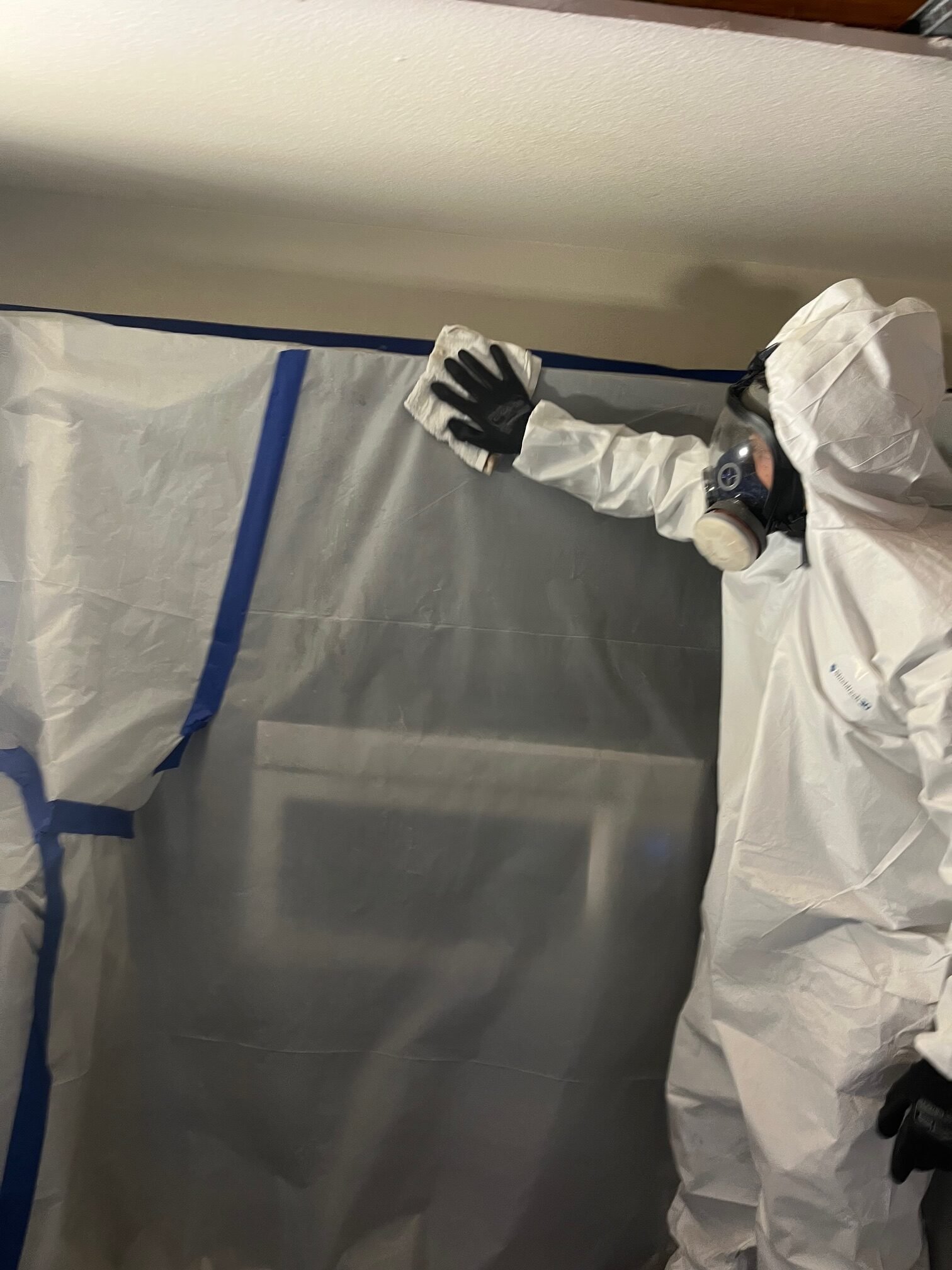
Air movers and dehumidifiers run outside or at the edge of the containment as appropriate while negative pressure remains active. Pros track temperature, relative humidity, and grains per pound. They document material moisture content until readings meet the dry standard for that assembly. Rushing to close walls before reaching target invites future growth.
PRV starts with a rigorous visual and surface cleanliness check. Lights, tops of doors, trim, duct covers, and horizontal ledges should be dust-free. Stains from prior growth are acceptable only if the material is non-porous and cleaned to criteria. Optionally, a third-party consultant performs air or surface clearance sampling. Containment is removed only after a pass. This sequence protects downstream rebuild and prevents rework.
Most projects allow occupants to remain in the home with the work zone isolated. Limit traffic near entries to containment. Pets should be kept out of the area. If remediation affects bedrooms, HVAC trunks, or large circulation paths, temporary relocation can be considered. Running the central system across an active work zone is avoided until PRV passes and registers are cleaned.
Scope size: square footage of impacted materials sets labor and debris volume.
Access and location: attics, crawl spaces, high ceilings, or tight chases add time.
Materials: plaster, specialty finishes, built-ins, and custom cabinetry take longer to remove and rebuild.
Controls: multi-zone containment and higher AFD counts increase equipment and filter costs.
Cause correction: plumbing, roofing, drainage, or ventilation repairs are separate line items.
Verification: independent PRV consulting and sampling add fees but reduce risk.
Fast source correction, targeted demo, and a clear scope reduce wasted passes. Early product selections for rebuild shorten cycle time. For a ballpark, use your Mold Remediation Cost Calculator to model room count, materials, access, and verification choices.
Swollen MDF and particleboard rarely recover. If cabinet boxes or faces are removed and the same line is no longer available, the typical outcome is replacement of affected runs to achieve a uniform appearance. Countertops mechanically tied to removed cabinets are usually included in the rebuild scope. Select finishes early and account for lead times to avoid holding a clean job in containment. For coverage rules and limits, see: Homeowners Insurance and Water Damage: What’s Covered and What’s Not.
Confirm the leak or moisture source is fixed or scheduled.
Photograph every affected wall, ceiling, floor, cabinet, and built-in before work.
Isolate the zone. Clear a clean path for pack-out.
Bag small items and label boxes by room.
Stage a spot for equipment and filter changes.
Choose whether a third-party will perform PRV and book the date.
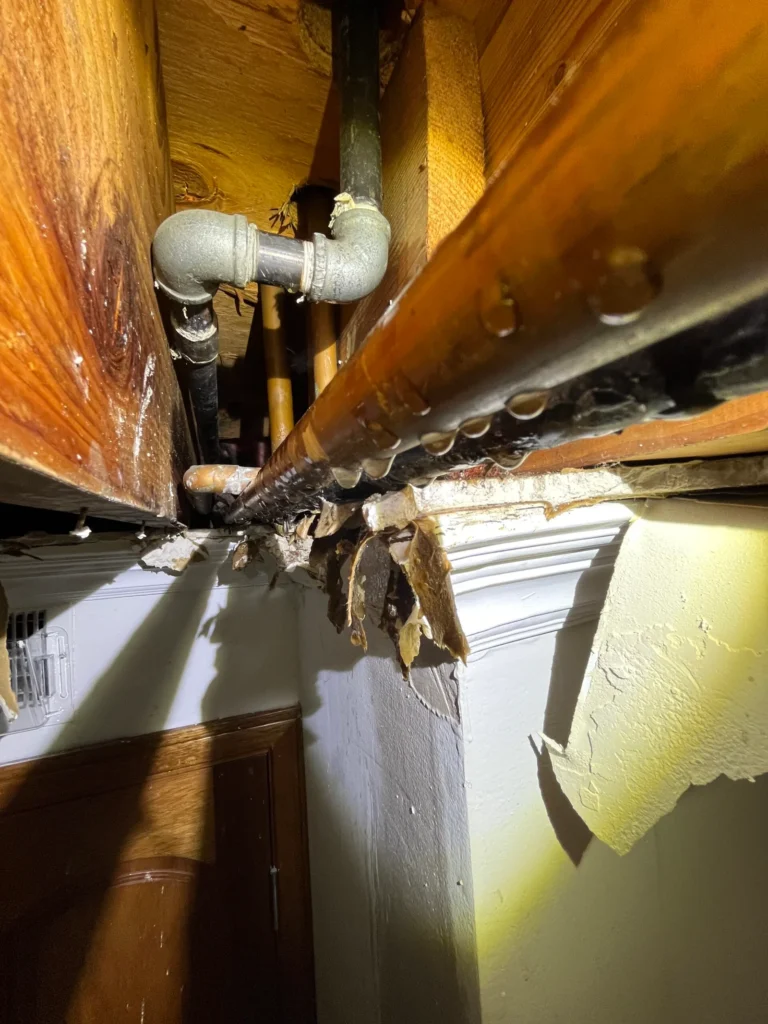
Cause and areas: list rooms, assemblies, square footage, and elevations.
Controls: containment dimensions, target pressure differential, HEPA AFD count and placement, make-up air plan.
Removal: lineal feet and heights of drywall, baseboards, insulation; cabinet and toe-kick notes; substrate conditions.
Cleaning: HEPA-vac → wet-wipe → HEPA-vac sequence and chemistries.
Drying: dry standard for each assembly, meter types, and reading frequency.
HVAC: register seals, nearby trunk handling, post-cleaning steps.
PRV: pass criteria, who performs it, and deliverables.
Rebuild coordination: who handles cabinets, finishes, and scheduling.
No visible dust on high surfaces, light fixtures, tops of doors, or supply/return covers.
Cut edges clean, no loose fibers.
Moisture readings at or below target for each material.
Filters changed on schedule with dates recorded.
If used, third-party air/surface sampling meets the laboratory’s acceptance criteria.
Containment removed only after a pass and final photos are taken.
Fogging or ozone in place of removal of colonized porous materials.
Demo without containment or without maintaining negative pressure.
One-and-done cleaning instead of the HEPA sandwich.
No moisture mapping or no dry-standard targets.
Reopening the HVAC before PRV.
“Encapsulation” as a substitute for removal when the substrate is still wet or colonized.
Aging housing stock brings lath-and-plaster walls, unlined chimneys, and older roof assemblies. Coastal and canyon microclimates swing humidity fast. Many condos and high-rises require elevator pads, staging plans, and quiet hours. Crawl spaces in older areas often need vapor control and drainage fixes. If abatement is required for lead-based paint or suspect asbestos in pre-1980 materials, coordinate with licensed environmental contractors before disturbance. For background on regional conditions, see link below.
IICRC-certified firm and technicians with recent project references.
California contractor license appropriate for demolition and rebuild.
Written scope that references IICRC S520 principles.
A clear containment plan and equipment list, including AFD counts and filter schedule.
Daily moisture logs and photo documentation.
Option to involve a third-party consultant for PRV.
Insurance and workers’ compensation certificates on file.
Keep indoor relative humidity near 40–50%. Vent bathrooms and kitchens outdoors, not into attics. Service the HVAC and change filters on schedule. Insulate cold surfaces that sweat. Seal exterior penetrations and maintain roof and window flashing. Fix leaks immediately and document repairs. In basements and crawl spaces, ensure drainage paths and vapor barriers keep moisture out. Prevention costs less than a second remediation.
If you see visible growth, smell a musty odor, or just had a water event, act. Stop the source, document the damage, and schedule an inspection. A specialist will define scope, protect clean areas, remove contamination, and verify results so rebuild holds. For water-first events, start with our What to Do After Flooding in Your House to stabilize conditions, then transition to targeted mold remediation.

Pete Mantizian is the dedicated owner of Onsite Pro Restoration. He is driven by a passion to improve living conditions and prevent health issues caused by improper restoration. With over 10 years in construction and 7 years in restoration, Petros has managed projects for major franchises like Serv-Pro and 911 Restoration. He holds certifications in Applied Structural Drying, Microbial Remediation, and more. Committed to excellence, Petros ensures every project is done right the first time. Outside of work, he cherishes time with his loving wife and two children, balancing his fulfilling career with creating lasting family memories.
Share
Protect your home and health. Call (818) 336-1800, email info@onsitepro.org, or complete the form below to book your inspection today. Our team will outline a clear remediation plan and help safeguard your property.

When you find yourself standing in water inside your home, the clock starts ticking. Those first 30 minutes are absolutely
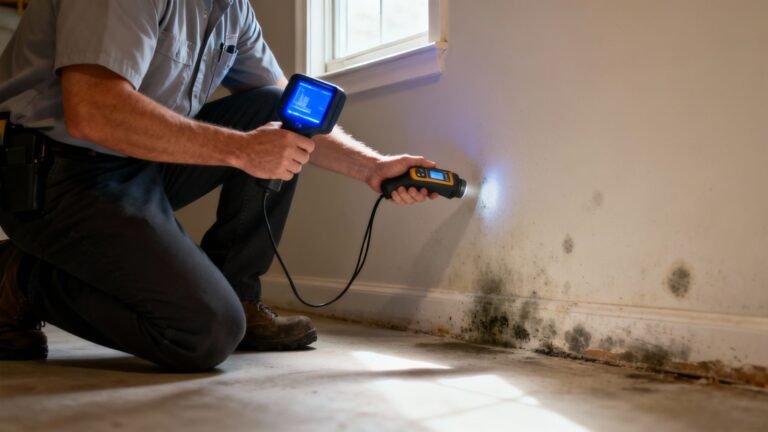
That musty smell in your basement you can't quite place, or that dark spot spreading on the ceiling after a
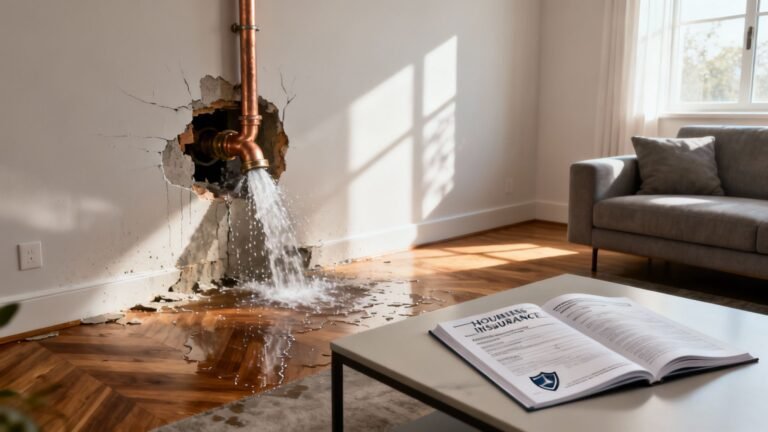
Wondering if homeowners insurance covers burst pipes in California? This guide explains when water damage is covered, what exclusions apply,